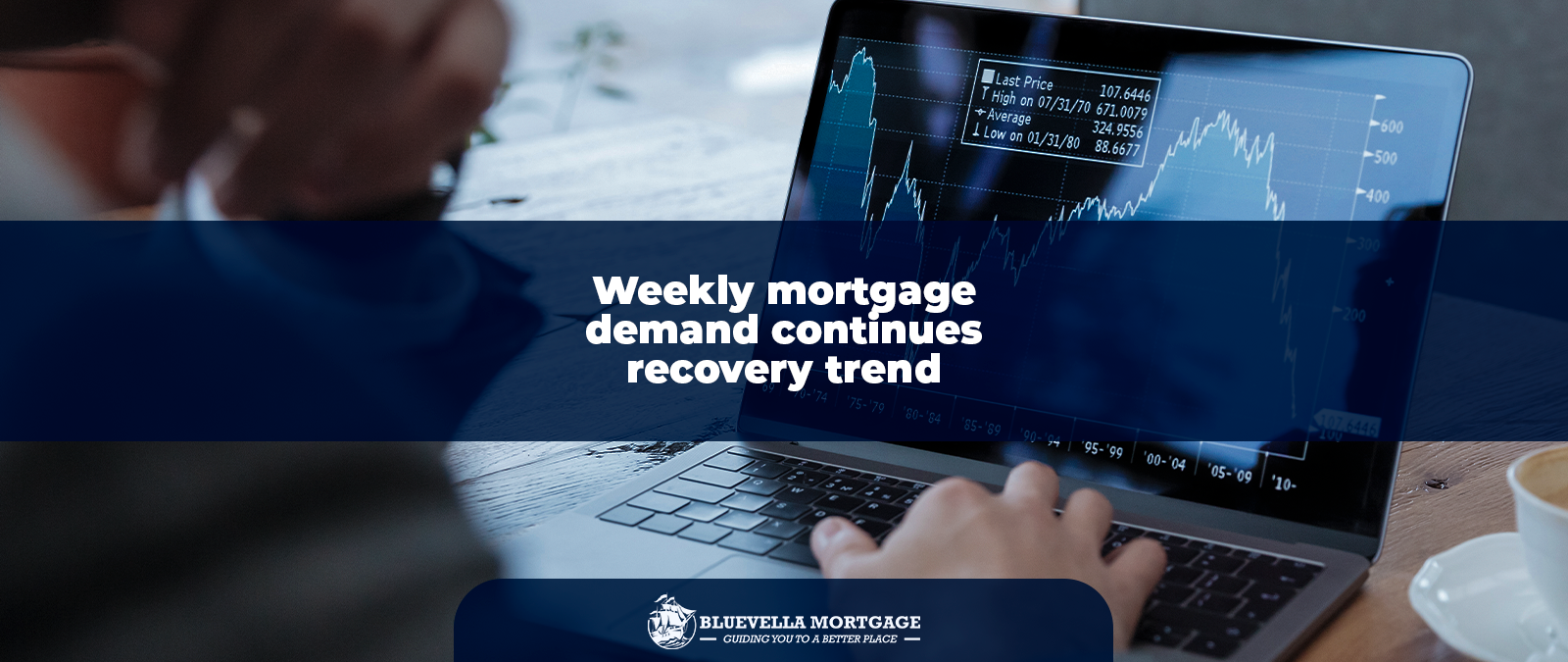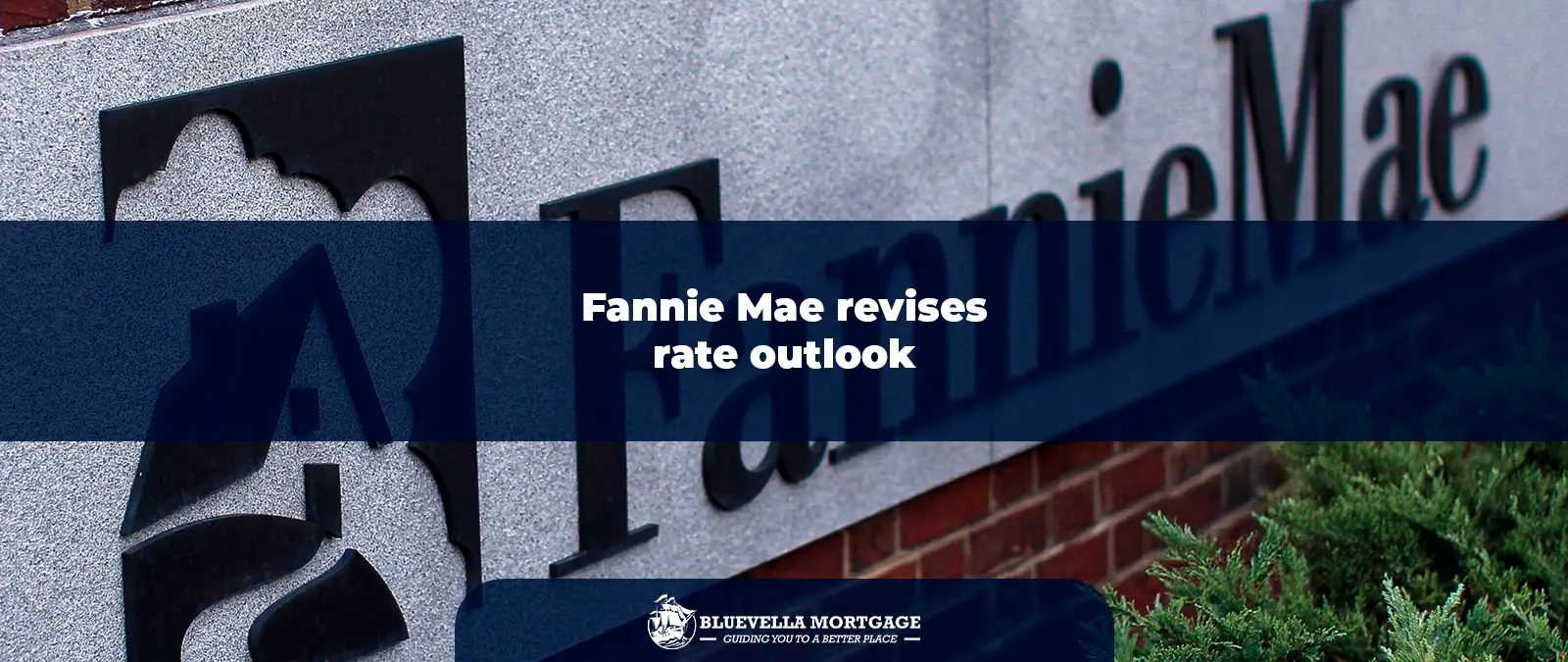Weekly Mortgage Demand Continues Recovery Trend – May 2025
Introduction to Weekly Mortgage Demand
The mortgage market has undergone significant fluctuations over the past few years, largely influenced by economic factors and changes in interest rates. As of May 2025, signs of recovery in weekly mortgage demand are becoming increasingly evident. This uptick suggests a renewed interest among consumers in home purchasing and refinancing, reflecting broader economic recovery trends. The current state of the mortgage market is vital for understanding consumer behavior, as it provides insight into the housing sector’s overall health.
Weekly mortgage application data serves as an important indicator of market sentiment. It highlights shifts in borrower activity, including first-time homebuyers, and reflects the impact of ongoing adjustments in lending conditions. In the context of May 2025, recent figures reveal a steady increase in applications compared to previous months. This positive momentum could be attributed to a combination of stabilizing interest rates, improved economic conditions, and a more favorable job market, all of which are encouraging potential buyers to explore their mortgage options.
Furthermore, the recovering real estate market is likely to influence not just first-time buyers but also existing homeowners looking to refinance. Low volatility in interest rates has provided an opportunity for borrowers to secure more favorable mortgage terms, enhancing affordability. As we delve deeper into the analysis of the data, it is essential to consider the diverse factors impacting these trends. Understanding the current trajectory of weekly mortgage demand will provide valuable insights into the dynamics of the housing market and its potential future direction.
Recent Trends in Mortgage Applications
The latest statistics reveal a notable increase in mortgage applications, marking a recovery in the housing market. During the week ending May 2025, mortgage application volumes rose by 1.1% compared to the prior week. This uptick is indicative of a broader trend, showcasing the replenished interest among prospective homebuyers in an evolving economic landscape.
A more detailed breakdown of the data uncovers a significant surge in purchase applications, which increased by 2.3% week-over-week. This growth underscores a renewed confidence in homeownership, with many individuals seeking to capitalize on favorable mortgage conditions. Year-over-year, the figures are even more compelling, as purchase applications have surged by an impressive 18%. Such a rise can be attributed to various factors including resilient consumer sentiment and competitive mortgage rates that continue to attract buyers into the market.
Furthermore, this rising trend in mortgage applications appears to be fueled by several key elements within the financial and housing sectors. Low mortgage rates historically make home purchasing more accessible and appealing, thereby enticing more buyers to enter the market. Additionally, the ongoing stability in employment rates supports individuals who are considering making significant financial commitments such as acquiring a home. This combination of favorable financial conditions aids in fostering increased activity in the housing market.
In light of these statistics, it is clear that the increased demand for mortgages aligns with the broader recovery trend that the housing market is currently experiencing. Such developments may well spur additional growth in the upcoming weeks, thereby influencing the overall dynamics of the mortgage industry.
Analysis of Refinance Applications
The recent data indicates a slight decline of 0.4% in refinance applications. Despite this minor setback, it is essential to note that refinance activity remains significantly higher than it was in the same week of the previous year, showcasing an impressive 44% increase compared to May 2024. This nuanced dynamic necessitates a closer examination of the underlying factors impacting consumer behavior in the current mortgage landscape.
A primary contributor to the dip in refinance applications could be attributed to the prevailing mortgage rates. While rates have remained relatively low, consumers may be adopting a wait-and-see stance, anticipating further fluctuations in these rates. The expectation that rates could rise again was a significant factor in earlier surges in refinance activity, as homeowners sought to lock in favorable terms. However, as the market stabilizes, borrowers might be taking a more cautious approach, delaying their refinancing decisions in hopes of achieving even more advantageous rates in the near future.
Furthermore, the overall economic climate can significantly influence consumer confidence. Factors such as inflation, job market stability, and broader economic conditions weigh heavily on potential refinance applicants. If consumers perceive economic uncertainty, they may be less inclined to initiate refinancing, despite the lure of lower rates. Additionally, many homeowners may feel content with their existing mortgage terms, especially if they secured favorable rates in the past few years, leading to a natural reduction in refinance applications.
Ultimately, while there is a slight decline in refinance applications, the noticeable increase compared to last year illustrates enduring interest in refinancing opportunities. As the market evolves, monitoring how economic indicators interact with mortgage rates will be vital in understanding consumer decisions surrounding refinancing in the coming weeks and months.
Government-Backed Loans’ Performance
In May 2025, the performance of government-backed loans has demonstrated notable trends that are reshaping the mortgage landscape. The Federal Housing Administration (FHA), Veterans Affairs (VA), and United States Department of Agriculture (USDA) loans are pivotal in providing accessible housing finance options to diverse borrower segments. A particularly striking statistic is the FHA share of mortgage applications, which has surged to 17.4%. This increase signifies a robust recovery in homebuying activity, especially among first-time homebuyers who often benefit from lower down payment requirements and more lenient credit standards.
VA loans have also shown impressive growth, with their share of mortgage applications rising to 13.4%. This notable increase affirms the strong demand for these loans among eligible veterans and active military personnel, who are attracted by the absence of down payment, no mortgage insurance, and competitive interest rates. The assurance provided by VA loans has made them an invaluable resource for service members seeking homeownership. Such trends underscore a broader trend of recovery in the housing market, where government initiatives continue to bolster access to home loans.
Conversely, the USDA loan program has maintained a stable share of 0.5% in the mortgage application landscape. While this figure may appear modest compared to FHA and VA loans, it reflects the USDA’s continued commitment to serving rural borrowers. The program’s focus on low-to-moderate-income individuals living in designated rural areas remains crucial in promoting growth in less populated regions. The implication of these figures suggests that while FHA and VA loans are capturing significant market share, the USDA’s stability is vital for ensuring that homeowners in rural communities also have access to the resources they need for home purchase.
Stability of Mortgage Rates
As of May 2025, mortgage rates have shown a notable degree of stability, providing an encouraging backdrop for potential homebuyers. The average rate for a 30-year fixed conforming mortgage stands at 3.75%, while the jumbo mortgage rate is slightly higher at 4.00%. In contrast, the 15-year fixed mortgage rate is currently positioned at approximately 3.25%. These figures reflect a broader trend of modestly fluctuating rates, as the market adjusts to recent economic conditions and the Federal Reserve’s monetary policies.
The stability observed in mortgage rates can be significantly attributed to the Federal Reserve’s recent decisions regarding interest rates and its ongoing commitment to maintaining targeted inflation levels. By refraining from aggressive rate hikes, the Fed aims to support economic growth while simultaneously managing inflation risks. This cautious approach has resonated throughout the mortgage market, resulting in the current favorable borrowing conditions.
Additionally, the stability in rates can be further linked to the levels of competition among lenders and a slightly increased supply of housing inventory. As lenders strive to attract borrowers, they often offer competitive rates, thereby enhancing accessibility to home financing. The interplay between these factors has created an environment that, while still sensitive to external economic influences, remains relatively calm in terms of mortgage rate volatility.
Looking ahead, it will be important to monitor how ongoing fiscal policies, geopolitical events, and shifts in consumer sentiment might influence the market. As the economy continues to recover, any significant disruptions could still impact mortgage rates and overall borrowing costs. In conclusion, the stability of mortgage rates observed in May 2025 represents a crucial factor for individuals considering home purchases or refinancing options, providing them with a sense of predictability and enhanced financial planning capabilities.
Also read: Homeowner Tenure
Driving Forces Behind Recovery
The recovery of mortgage demand in recent months has been influenced by several critical driving forces. One of the most notable is the upward momentum in the spring housing market. Traditionally, spring marks the beginning of the homebuying season, characterized by an influx of buyers entering the market. This year, improved consumer confidence and a stronger job market have prompted many individuals to consider purchasing homes, which in turn drives up mortgage applications.
Another significant factor contributing to the recovery is the increase in property listings and inventory levels. A more favorable inventory of homes allows prospective buyers a wider range of options, easing concerns related to limited selections. As more homeowners are willing to sell amid a recovering market, this uptick in listings creates a competitive atmosphere, further encouraging buyers to secure mortgages. Increased inventory also supports the notion that price growth may stabilize, aligning with consumer expectations and encouraging a renewed interest in homeownership.
Stable interest rates play a pivotal role in influencing consumer behavior as well. With mortgage rates remaining at historically low levels, potential buyers are finding opportunities that were once deemed unattainable. The affordability afforded by these low rates not only expands the pool of eligible homebuyers but also enhances the purchasing power of those looking to finance their homes. As interest rates remain stable, prospective buyers feel less urgency to rush into the market, which ironically leads to increased demand for mortgages as consumers evaluate their options more thoroughly.
Together, these key drivers—the seasonal boost of the housing market, increased listings and inventory, and stable interest rates—are effectively revitalizing the mortgage landscape, fostering a climate where both buyers and lenders can operate with optimism and renewed confidence.
Year-Over-Year Improvements
The mortgage landscape has shown notable enhancements when examining year-over-year trends in both purchase and refinance activities from 2024 to 2025. This upward trajectory in mortgage demand is indicative of improving economic conditions and growing consumer confidence in the housing market. As the economy rebounds, driven by factors such as lower unemployment rates and increased wages, individuals are more inclined to make significant financial commitments, including purchasing homes or refinancing existing mortgages.
In the first quarter of 2025, data reveals a substantial increase in mortgage applications compared to the previous year. Purchase mortgage applications surged by approximately 15%, reflecting consumers’ optimism about entering the housing market. A combination of robust job growth, rising household incomes, and favorable mortgage rates has propelled individuals toward homeownership, marking a significant rebound from the uncertainties experienced in recent years. The prevailing trend also suggests that consumers are not merely seeking to purchase homes, but are also increasingly exploring refinance options to capitalize on historically low interest rates.
Refinancing activities have also seen a remarkable year-over-year rise, with applications climbing by around 10%. This shift can be attributed to homeowners recognizing the potential of lower monthly payments and better loan terms in a competitive mortgage landscape. Additionally, many existing homeowners are taking this opportunity to access home equity, further stimulating consumer spending and economic growth. Such refinances signify not only a response to favorable market conditions but also a tactical financial move as consumers adjust to changes in the economy.
Ultimately, these year-over-year improvements serve as a reflection of broader economic trends and enhanced consumer confidence within the housing market, positioning the mortgage sector on a path of recovery and growth as we progress through 2025.
Impact on Homebuyers and Sellers
The recent recovery in mortgage demand has notable implications for both homebuyers and sellers in the current real estate market. As mortgage applications show signs of resurgence, the environment is becoming increasingly favorable for sellers. With an uptick in buyer interest, sellers can often command higher prices and benefit from quicker sales. This rising demand is typically attributed to lower interest rates, which can lessen the financial burden on buyers and incentivize them to act sooner rather than later.
For sellers, this situation signals a competitive edge, as a higher volume of qualified buyers often leads to bidding wars, ultimately pushing sale prices above initial listings. In fast-moving markets, properties are likely to receive multiple offers, providing sellers with advantageous negotiation power. This dynamic can also prompt sellers who have been hesitant to list their homes to re-enter the market. A revived mortgage demand not only facilitates a smoother selling process but can also positively impact overall market liquidity.
On the other hand, homebuyers now find themselves in a transformed landscape characterized by opportunities. With an increased availability of financing options and the potential for lower borrowing costs, many buyers may want to capitalize on these conditions before any alterations in the interest rates or policies. Furthermore, this recovery trend has created an environment where buyers can feel more assured about securing favorable terms on their mortgage products. However, it is crucial for buyers to remain vigilant and prepared to move quickly, as the increased competition resulting from rising demand may limit their choices.
Overall, the interplay between improved mortgage demand, enhanced seller confidence, and motivated buyers forms a unique market dynamic that impacts both parties in significant ways. Understanding these trends is essential for those involved in real estate to navigate the current landscape effectively.
Conclusion and Future Outlook
In reviewing the trends in weekly mortgage demand as we approach the end of May 2025, it is evident that there has been a notable recovery in this sector. The increase in mortgage applications, particularly for home purchases, signals a renewed interest from potential buyers. As interest rates continue to stabilize, we see a more optimistic consumer sentiment surrounding homeownership. This shift hints at a potential resurgence in the housing market, which has faced numerous challenges over the past few years.
Nonetheless, while there are promising signs, it is essential to remain cautious. Potential risks lurk in the form of economic instability, job market fluctuations, and unexpected shifts in interest rates. These factors could significantly impact mortgage rates and, subsequently, housing demand. Thus, stakeholders in the real estate industry should consider these elements when planning for the remainder of the year. On the other side, emerging opportunities arise with demographic changes; millennials are entering the market, seeking homes. This segment is likely to drive future mortgage demand, thus providing a pathway for sustained industry recovery.
Moreover, market analysts emphasize the importance of adaptability; the ability to respond to changing market dynamics will be crucial for lenders and real estate agents alike. As consumer behavior evolves, understanding and anticipating buyer preferences could yield substantial benefits. In conclusion, while the recovery trend in mortgage demand appears promising for the housing market, ongoing vigilance is necessary. Those engaged in the housing sector must stay informed and prepared to leverage opportunities while mitigating potential risks as we navigate the complexities of the current economic landscape.
Read more here: Mortgage Demand From Homeowners Recovers as Applications Rise for the Second Week in a Row




